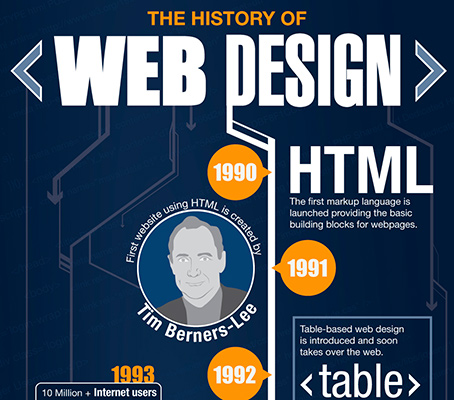The Change Of Online Operatings Systems: A Journey Via Time
The Change Of Online Operatings Systems: A Journey Via Time
Blog Article
Short Article Composed By-Solis Vangsgaard
In the past, websites were basic and focused on info. Navigating was direct, and design was for desktops. Currently, individual experience is crucial. Data guides designs for very easy navigating. Responsive layouts fit various tools. Today, dark setting reduces strain, and minimal menus enhance navigation. Interactive features involve individuals, and vibrant visuals stick out. AI combination increases interaction. See how style has advanced to enhance your on-line journey.
Very Early Days of Web Design
In the very early days of website design, simpleness preponderated. Websites were standard, with restricted shades, font styles, and formats. The focus was on giving details rather than showy visuals. Individuals accessed the web with slow-moving dial-up links, so rate and performance were essential.
Navigating menus were straightforward, typically situated on top or side of the page. Internet sites were made for desktop computers, as mobile browsing had not been yet prevalent. Material was king, and designers focused on simple readability over complex style elements.
HTML was the primary coding language utilized, and developers had to function within its restraints. Animations and interactive functions were very little contrasted to today's criteria. Internet sites were static, with little vibrant material or personalized customer experiences.
Rise of User-Focused Layout
With the evolution of internet site layout, a change towards user-focused design concepts has ended up being progressively famous. Today, creating websites that prioritize individual experience is important for engaging visitors and accomplishing organization goals. User-focused style includes understanding the requirements, choices, and habits of your target audience to customize the website's design, content, and includes accordingly.
Developers now perform complete research, such as customer studies and usability screening, to gather insights and feedback straight from individuals. This data-driven strategy assists in developing intuitive navigating, clear calls-to-action, and visually appealing interfaces that reverberate with visitors. By putting the user at the center of the style procedure, internet sites can supply a more individualized and satisfying experience.
Receptive layout has additionally emerged as a key aspect of user-focused layout, making sure that sites are optimized for various gadgets and display dimensions. This versatility improves access and usability, satisfying the varied means individuals connect with internet sites today. Essentially, the rise of user-focused layout indicates a change towards creating digital experiences that focus on the needs and expectations of the end individual.
Modern Trends in Web Design
Explore the most recent patterns shaping web design today. One prominent pattern is dark mode style, supplying a smooth and contemporary look while reducing eye pressure in low-light environments. Another key trend is minimal navigation, streamlining food selections and boosting individual experience by concentrating on essential elements. Including https://danteejptx.blog5star.com/30265400/enhancing-your-internet-site-s-performance-via-expert-on-page-seo-strategies -interactions, such as computer animated switches or scrolling results, can develop a more interesting and interactive web site. Receptive style continues to be critical, making certain seamless individual experiences across different gadgets. Additionally, utilizing bold typography and asymmetrical layouts can add visual passion and draw attention to details material.
Integrating AI modern technology, like chatbots for consumer support or personalized referrals, enhances customer interaction and enhances procedures. https://searchengineland.com/develop-authoritative-content-google-searchers-smx-advanced-keynote-385793 has also end up being a considerable fad, with designers focusing on comprehensive design methods to accommodate varied individual requirements. Welcoming sustainability by enhancing web site efficiency for rate and performance is one more emerging pattern in web design. Teaming up with individual responses and data analytics to iterate and enhance style constantly is vital for staying appropriate in the ever-evolving digital landscape. By embracing these contemporary patterns, you can create an aesthetically enticing, straightforward web site that resonates with your target market.
Conclusion
As you assess the development of site style from the very early days to now, you can see just how user-focused design has actually become the driving pressure behind modern-day patterns.
Welcome the journey of change and adjustment in web design, always keeping the user experience at the center.
Keep current with the most up to date patterns and technologies, and never ever quit progressing your method to produce visually sensational and user-friendly websites.
Develop, adjust, and produce - the future of web design remains in your hands.
